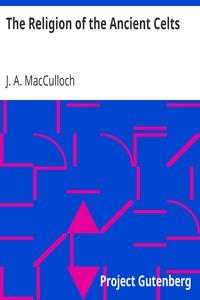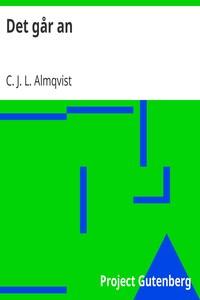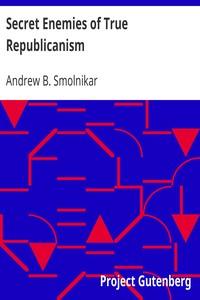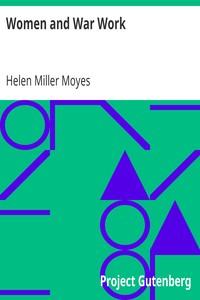|
|
Read this ebook for free! No credit card needed, absolutely nothing to pay.Words: 131454 in 59 pages
This is an ebook sharing website. You can read the uploaded ebooks for free here. No credit cards needed, nothing to pay. If you want to own a digital copy of the ebook, or want to read offline with your favorite ebook-reader, then you can choose to buy and download the ebook.

: The Religion of the Ancient Celts by MacCulloch J A John Arnott - Celts Religion; Mythology Celtic Paganism@FreeBooksTue 06 Jun, 2023 CHAP. PAGE LIST OF ABBREVIATIONS USED IN THE NOTES THROUGHOUT THIS WORK INTRODUCTORY. To summon a dead religion from its forgotten grave and to make it tell its story, would require an enchanter's wand. Other old faiths, of Egypt, Babylon, Greece, Rome, are known to us. But in their case liturgies, myths, theogonies, theologies, and the accessories of cult, remain to yield their report of the outward form of human belief and aspiration. How scanty, on the other hand, are the records of Celtic religion! The bygone faith of a people who have inspired the world with noble dreams must be constructed painfully, and often in fear and trembling, out of fragmentary and, in many cases, transformed remains. From these sources we try to rebuild Celtic paganism and to guess at its inner spirit, though we are working in the twilight on a heap of fragments. No Celt has left us a record of his faith and practice, and the unwritten poems of the Druids died with them. Yet from these fragments we see the Celt as the seeker after God, linking himself by strong ties to the unseen, and eager to conquer the unknown by religious rite or magic art. For the things of the spirit have never appealed in vain to the Celtic soul, and long ago classical observers were struck with the religiosity of the Celts. They neither forgot nor transgressed the law of the gods, and they thought that no good befell men apart from their will. The submission of the Celts to the Druids shows how they welcomed authority in matters of religion, and all Celtic regions have been characterised by religious devotion, easily passing over to superstition, and by loyalty to ideals and lost causes. The Celts were born dreamers, as their exquisite Elysium belief will show, and much that is spiritual and romantic in more than one European literature is due to them. The analogy of religious evolution in other faiths helps us in reconstructing that of the Celts. Though no historic Celtic group was racially pure, the profound influence of the Celtic temperament soon "Celticised" the religious contributions of the non-Celtic element which may already have had many Celtic parallels. Because a given Celtic rite or belief seems to be "un-Aryan," it need not necessarily be borrowed. The Celts had a savage past, and, conservative as they were, they kept much of it alive. Our business, therefore, lies with Celtic religion as a whole. These primitive elements were there before the Celts migrated from the old "Aryan" home; yet since they appear in Celtic religion to the end, we speak of them as Celtic. The earliest aspect of that religion, before the Celts became a separate people, was a cult of nature spirits, or of the life manifested in nature. But men and women probably had separate cults, and, of the two, perhaps that of the latter is more important. As hunters, men worshipped the animals they slew, apologising to them for the slaughter. This apologetic attitude, found with all primitive hunters, is of the nature of a cult. Other animals, too sacred to be slain, would be preserved and worshipped, the cult giving rise to domestication and pastoral life, with totemism as a probable factor. Earth, producing vegetation, was the fruitful mother; but since the origin of agriculture is mainly due to women, the Earth cult would be practised by them, as well as, later, that of vegetation and corn spirits, all regarded as female. As men began to interest themselves in agriculture, they would join in the female cults, probably with the result of changing the sex of the spirits worshipped. An Earth-god would take the place of the Earth-mother, or stand as her consort or son. Vegetation and corn spirits would often become male, though many spirits, even when they were exalted into divinities, remained female. The pantheon was thus a large one, but on the whole the divinities of growth were more generally important. The older nature spirits and divine animals were never quite forgotten, especially by the folk, who also preserved the old rituals of vegetation spirits, while the gods of growth were worshipped at the great festivals. Yet in essence the lower and the higher cults were one and the same, and, save where Roman influence destroyed Celtic religion, the older primitive strands are everywhere apparent. The temperament of the Celt kept him close to nature, and he never quite dropped the primitive elements of his religion. Moreover, the early influence of female cults of female spirits and goddesses remained to the end as another predominant factor. Most of the Celtic divinities were local in character, each tribe possessing its own group, each god having functions similar to those of other groups. Some, however, had or gained a more universal character, absorbing divinities with similar functions. Still this local character must be borne in mind. The numerous divinities of Gaul, with differing names--but, judging by their assimilation to the same Roman divinity, similar functions, are best understood as gods of local groups. This is probably true also of Britain and Ireland. But those gods worshipped far and wide over the Celtic area may be gods of the undivided Celts, or gods of some dominant Celtic group extending their influence on all sides, or, in some cases, popular gods whose cult passed beyond the tribal bounds. If it seem precarious to see such close similarity in the local gods of a people extending right across Europe, appeal can be made to the influence of the Celtic temperament, producing everywhere the same results, and to the homogeneity of Celtic civilisation, save in local areas, e.g. the South of Gaul. Moreover, the comparison of the various testimonies of onlookers points to a general similarity, while the permanence of the primitive elements in Celtic religion must have tended to keep it everywhere the same. Though in Gaul we have only inscriptions and in Ireland only distorted myths, yet those testimonies, as well as the evidence of folk-survivals in both regions, point to the similarity of religious phenomena. The Druids, as a more or less organised priesthood, would assist in preserving the general likeness. Thus the primitive nature-spirits gave place to greater or lesser gods, each with his separate department and functions. Though growing civilisation tended to separate them from the soil, they never quite lost touch with it. In return for man's worship and sacrifices, they gave life and increase, victory, strength, and skill. But these sacrifices, had been and still often were rites in which the representative of a god was slain. Some divinities were worshipped over a wide area, most were gods of local groups, and there were spirits of every place, hill, wood, and stream. Magic rites mingled with the cult, but both were guided by an organised priesthood. And as the Celts believed in unseen gods, so they believed in an unseen region whither they passed after death. Our knowledge of the higher side of Celtic religion is practically a blank, since no description of the inner spiritual life has come down to us. How far the Celts cultivated religion in our sense of the term, or had glimpses of Monotheism, or were troubled by a deep sense of sin, is unknown. But a people whose spiritual influence has later been so great, must have had glimpses of these things. Some of them must have known the thirst of the soul for God, or sought a higher ethical standard than that of their time. The enthusiastic reception of Christianity, the devotion of the early Celtic saints, and the character of the old Celtic church, all suggest this. The relation of the Celtic church to paganism was mainly intolerant, though not wholly so. It often adopted the less harmful customs of the past, merging pagan festivals in its own, founding churches on the sites of the old cult, dedicating sacred wells to a saint. A saint would visit the tomb of a pagan to hear an old epic rehearsed, or would call up pagan heroes from hell and give them a place in paradise. Other saints recall dead heroes from the Land of the Blessed, and learn the nature of that wonderland and the heroic deeds "Of the old days, which seem to be Much older than any history That is written in any book." Free books android app tbrJar TBR JAR Read Free books online gutenberg More posts by @FreeBooks

: Jaffery by Locke William John Matania Fortunino Illustrator - Fiction Bestsellers American 1895-1923@FreeBooksTue 06 Jun, 2023
|
Terms of Use Stock Market News! © gutenberg.org.in2025 All Rights reserved.






